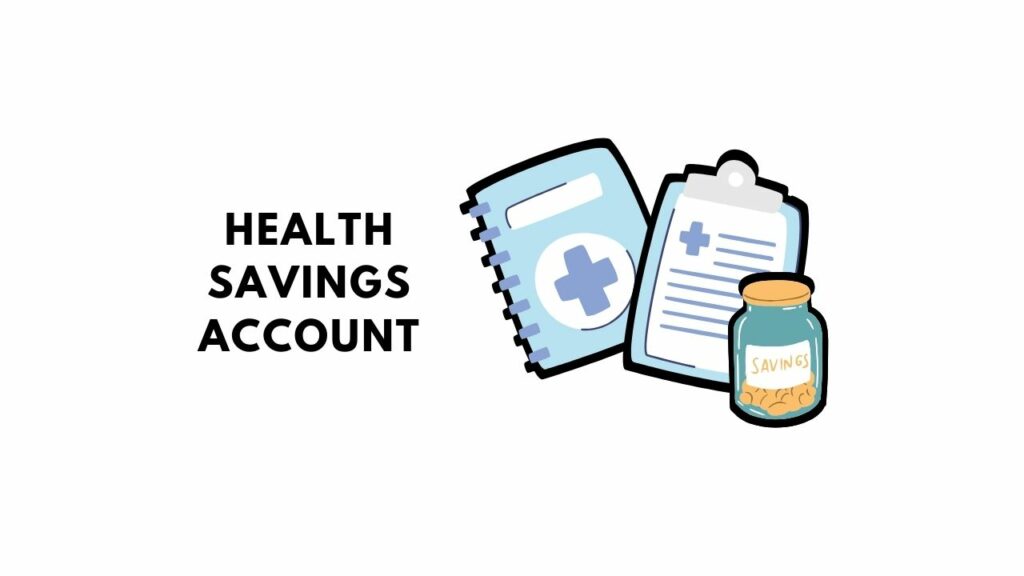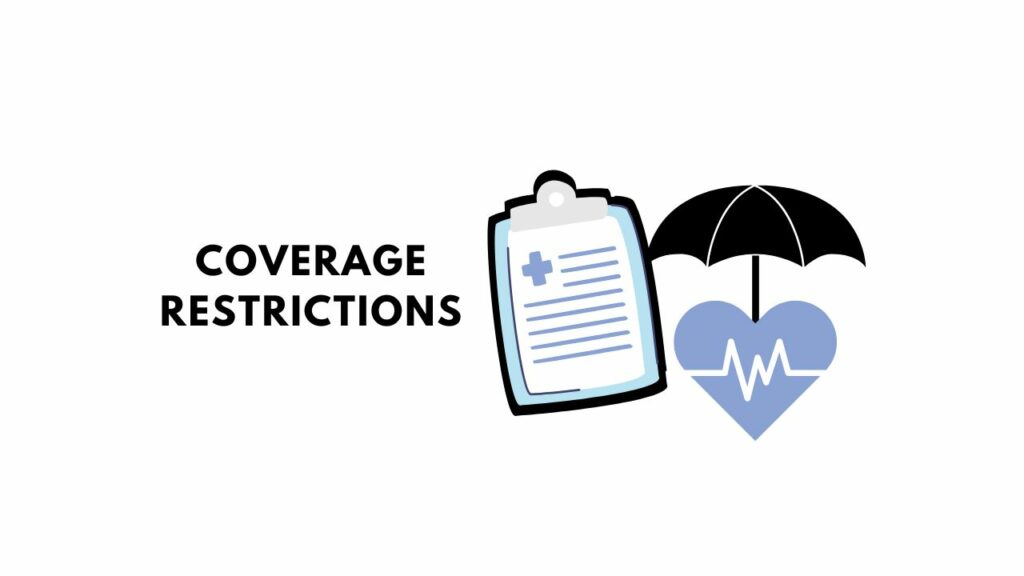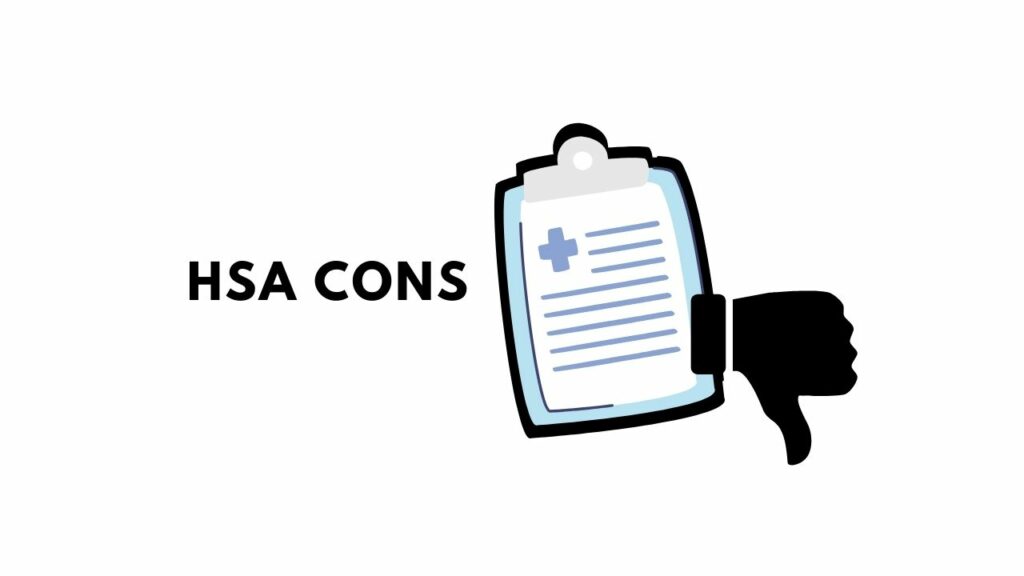An HSA, or Health Savings Account, is your tool for saving money on health costs. It’s like putting coins into a piggy bank for doctor visits, medicine, even glasses. But the magic happens when you see that these coins are still in your pocket because they’re tax-free when used right. The range of things this piggy bank helps pay for might surprise you; prescription lenses or a pair of crutches, even acupuncture! So, let’s dive in and start filling up that health piggy bank.
A Health Savings Account (HSA) is a tax-advantaged savings account that enables individuals enrolled in a high-deductible health plan to set aside funds for qualified medical expenses. Contributions to an HSA are tax-deductible, the funds can be invested and grow tax-free, and withdrawals for eligible health-related costs are also tax-free. It’s important to note that HSA funds cannot be used to pay insurance premiums, but they offer a valuable way to save for current and future healthcare needs while enjoying tax benefits.
What Is a Health Savings Account (HSA)?

A Health Savings Account, or HSA, is like a personal savings account, but it’s a special one that can only be used for medical expenses. If you have a high-deductible health plan (HDHP), you’re eligible for an HSA. It’s a way to save money to pay for your healthcare costs—things like doctor visits, medications, and treatments.
Now, what makes an HSA special? Well, when you put money into your HSA, it’s with pre-tax dollars. Essentially, this means the amount of money you put into your HSA is deducted from your taxable income. That’s like saving money on your taxes!
For example, let’s say you earn $50,000 a year and you put $3,000 into your HSA. You will only pay taxes on $47,000 instead of the full $50,000. It’s like getting a discount on the money you use for healthcare.
And here’s the best part: When you take money out of your HSA to pay for qualified medical expenses, like those mentioned before, it’s completely tax-free. This means that the amount you withdraw isn’t subject to income tax.
Eligibility Criteria

To qualify for an HSA, as mentioned earlier, you need to have a high-deductible health plan (HDHP). This type of insurance plan has lower premiums and higher deductibles compared to traditional health plans.
For instance, let’s say you’ve had an HDHP for a year and you haven’t used up all the money in your HSA by the end of the year. The great thing about HSAs is that the money rolls over to the next year. You don’t lose it. So, it’s always there when you need it.
In addition to this, anyone can contribute to your HSA. It doesn’t just have to be you. Your employer can contribute; a family member can contribute; and if you’re 55 or older, you can make catch-up contributions—up to an additional $1,000 per year on top of the regular contribution limits.
HSAs offer a unique advantage by providing significant tax benefits and ultimate flexibility for covering medical expenses. Let’s explore further how these accounts work and how they can be optimized for financial well-being.
Moving forward from understanding HSAs and their eligibility criteria, let’s now shift our focus towards exploring the intricate guidelines governing these valuable accounts.
Eligibility Criteria for an HSA
To qualify for an HSA, you must meet specific criteria set by the IRS. Here are the key points to consider:
HDHP Qualification

To open and contribute to an HSA, individuals must be covered by a high-deductible health plan (HDHP). Your health insurance plan must have a minimum deductible of $1,600 for self-only coverage or $3,200 for family coverage. In addition to the deductible, the out-of-pocket maximum limits are also important considerations and are set by the IRS. These limits determine the maximum amount you can pay for covered healthcare services in a plan year before your insurance starts to pay 100% of the cost.
Meeting these specific HDHP qualifications is crucial, as it directly impacts your eligibility to benefit from an HSA’s tax advantages. For those who meet these requirements, enrolling in an HDHP can be a smart move, as it allows individuals to lower their monthly insurance premiums and set aside funds in an HSA to cover qualified medical expenses on a tax-free basis.
Other Coverage Restrictions

It’s essential to note that having additional health coverage can also impact your eligibility for an HSA. For instance, if you are claimed as a dependent on someone else’s tax return, you cannot contribute to an HSA. Furthermore, being enrolled in Medicare automatically disqualifies individuals from making new contributions to an HSA. It’s important to carefully evaluate your healthcare coverage options and potential impacts on HSA eligibility when considering enrolling in Medicare or being claimed as a dependent.
Understanding these eligibility criteria is crucial because it ensures that you make informed decisions about your healthcare coverage and potential tax benefits. By meeting the criteria outlined by the IRS, individuals can effectively leverage the numerous tax advantages offered by HSAs while responsibly managing their healthcare needs.
Given this criteria, it’s important to carefully consider your individual circumstances and future plans before deciding to contribute to an HSA. Making informed decisions regarding healthcare coverage and tax planning will allow you to maximize the benefits of an HSA while avoiding any potential complications related to eligibility.
Now equipped with knowledge about the eligibility criteria for an HSA, let’s delve into navigating through employer-sponsored HSAs which can offer additional benefits and considerations.
Navigating Through Employer-Sponsored HSAs

When you’re starting a new job or reviewing your current benefits package, you may encounter something called a Health Savings Account (HSA). This is often paired with a High Deductible Health Plan (HDHP). Many employers offer this as part of their benefits package. It’s essential to take the time to understand this perk as it can make a significant difference in your healthcare expenses.
First things first, delve into what your employer offers in terms of contributions to the HSA. When an employer offers an HSA, they might also contribute money into it, which essentially translates to free money that can be used for qualified medical expenses. The more your employer contributes, the less you might need to put in yourself – sounds like a great deal, right? Make sure to find out how much they plan on giving you.
A recent study showed that the average employer contribution to HSA accounts in 2023 was $935. That could be a significant boost to your account without any effort on your part.
Now, let’s consider plan options. You’re not stuck with just one plan option that your employer offers. Their chosen provider might offer different kinds of investment options within the HSA. If you intend to use the money strictly for medical expenses, then a regular savings account within the HSA could work fine for you. But if you want the money to grow over time so you can use it later in life after retirement or something, there are investment options available too.
According to industry statistics, 58% of employers offer a high-deductible health plan (HDHP) with an HSA option. Knowing whether your employer offers such a plan is vital because it determines your eligibility for opening an HSA in the first place.
Apart from these contributions and plan options, consider any extra perks or features your employer might offer alongside the HSA. Some provide online tools and resources to help you manage and track your healthcare spending and plan for future expenses better.
This means if you know what features are available and how they can help you manage your funds, it would be in your best interest to make use of them.
And remember – once again – understanding and making optimal use of all these benefits can go a long way in maximizing tax benefits and managing out-of-pocket healthcare costs effectively.
Just as each coin has two sides, understanding employer-sponsored HSAs opens up opportunities while navigating through potential challenges. Let’s now turn our attention towards leveraging contributions and maximizing tax benefits within HSAs.
Maximizing HSA Contributions and Tax Benefits

When it comes to Health Savings Accounts (HSAs), making the most of the contribution limits is crucial for securing your financial future. As of 2024, individuals can contribute up to $4,150, an increase of 7.8% from the previous year, while families can contribute up to $8,300, a 7.1% increase from the previous limit. This is vital because contributing the maximum amount each year not only allows you to pay for large medical bills with pre-tax money but also reduces your income taxes.
Maximizing HSA contributions also means taking full advantage of the tax benefits associated with these accounts. When you contribute to your HSA, you reduce your taxable income by the amount you contribute. This translates to substantial tax savings because this reduction occurs before both federal and state income taxes are applied. For example, if you fall within a 22% tax bracket and contribute the maximum allowed amount of $4,150 as an individual, you could potentially save $913 in taxes.
| Tax Bracket | Maximum Contribution | Potential Tax Saving |
|---|---|---|
| 12% | $4,150 (Individual) | $498 |
| 22% | $8,300 (Family) | $1,826 |
| 32% | $4,150 (Individual) | $1,328 |
The accumulated interest or investment earnings from the funds in your HSA are also tax-free. This means that not only are you reducing your taxable income at the time of contribution, but any growth on those funds over time is also shielded from taxes.
It’s like planting a money tree in your backyard and never having to pay taxes on the fruit it yields!
But here’s the cherry on top: once you reach 65, you can start withdrawing money from your HSA for non-medical expenses without penalty. While these withdrawals will be taxed as regular income, this opens up yet another avenue for tax-advantaged savings.
Getting the most out of your HSA contributions doesn’t just mean putting away as much as you can—it’s about leveraging these contributions to optimize your tax advantages and build lasting financial security.
Leveraging your HSA contributions isn’t just about gaining tax advantages—it’s also about making smart investment choices with those funds. Let’s take a closer look at strategies for investing your HSA funds.
Strategies on Investing HSA Funds

When it comes to investing your Health Savings Account (HSA) funds, it’s crucial to approach it with a long-term perspective. But before we get into the different investment options, let’s first understand why investing your HSA funds is an attractive option.
** HSA providers often allow account holders to invest their funds once the account balance reaches a certain threshold. By doing so, individuals can take advantage of potential investment growth, which can then be used to cover future healthcare expenses or other qualifying medical costs, acting as an extra layer of financial protection for medical emergencies or retirement healthcare needs.
Key factors when considering investing HSA funds often include:
- Average annual return on investment.
- Comparison of investment options with historical performance.
- Comparison of fees and expenses associated with different investment options.
- Impact of investment choices on the long-term growth of HSA funds.
- Case studies of individuals who have successfully grown their HSA funds through strategic investments.
For instance, if you invest your HSA funds in mutual funds, you could potentially benefit from an average annual return on investment of 7%, as opposed to keeping it in a regular savings account where it might earn close to nothing.
Investment Options

Here are some common investment options that are often available through HSA providers:
| Investment Option | Description |
|---|---|
| Mutual Funds | Professionally managed investment funds that pool money from multiple investors to purchase securities. |
| Stocks and Bonds | Stocks represent shares in individual companies, while bonds are debt securities issued by governments and corporations. |
| Exchange-Traded Funds (ETFs) | Similar to mutual funds but they are traded throughout the day on stock exchanges at market prices. |
Each of these options has its own historical performance and risk profile, so it’s important to carefully evaluate and choose based on your personal financial goals, risk tolerance, and time horizon.
You might be wondering – why should I consider investing my HSA funds instead of just keeping them as cash? Well, while cash is safe, it generally doesn’t offer much growth potential. By investing your HSA funds wisely, you have the opportunity to grow them over time and potentially build up a substantial sum for future medical needs.
It’s important to keep in mind that investments involve risk, including the possible loss of principal, especially during periods of market volatility. However, with careful consideration and perhaps professional advice in some cases, you can make informed decisions about how to invest your HSA funds in a way that aligns with your financial goals.
By understanding the potential benefits of investing your HSA funds and exploring various investment options, you can take steps towards growing your healthcare savings for the long term while leveraging the tax advantages offered by HSAs.
With this insight into maximizing your HSA benefits through investment strategies, it’s time to uncover the broader landscape surrounding HSAs and evaluate their pros and cons.
Pros and Cons of Having an HSA
Health Savings Accounts (HSAs) come with a unique set of advantages and disadvantages. Like any financial tool, it’s essential to weigh the positives against the negatives to make an informed decision about whether an HSA is the right choice for you.
Pros

Tax-Advantaged Savings The significant benefit of an HSA is its tax advantage. The contributions made are done with pre-tax dollars, reducing your taxable income and therefore lowering your annual tax bill. Furthermore, the funds within the HSA grow tax-free, allowing for potentially substantial growth over time.
Portability HSAs offer a level of flexibility that is often not associated with other healthcare accounts. Regardless of job changes or health plan transitions, the HSA funds continue to belong to the account holder. This means that the money remains available for qualified medical expenses even if there are shifts in employment or insurance coverage.
The tax benefits and portability make HSAs a desirable option for many individuals, particularly those who anticipate using their accounts for long-term healthcare planning.
Cons

High Deductibles One notable downside to consider when contemplating an HSA is the association with High Deductible Health Plans (HDHPs). While these plans can have lower monthly premiums, they also come with higher deductibles. This means that in the event of a serious illness or injury, you may face a substantial financial burden due to the high out-of-pocket costs for medical care.
Penalties Another potential disadvantage of HSAs pertains to non-qualified expenses. Withdrawing funds for expenses that do not meet the criteria before reaching the age of 65 can result in income taxes being levied on the withdrawn amount along with an additional 20% penalty. This financial implication requires careful consideration when managing HSA funds.
It’s important to take these drawbacks into account as they can offset some of the advantages associated with HSAs. Before deciding whether to open or contribute to an HSA, it’s crucial to evaluate these factors thoroughly based on your individual financial situation and healthcare needs.
Understanding the eligibility of medical expenses for HSA funds is essential for maximizing the benefits of this valuable healthcare savings tool.
Understanding Eligibility of Medical Expenses for HSA

The concept of what expenditure counts as a qualified medical expense can sometimes feel like navigating through complex tax jargon. However, it’s all about understanding how to make the most out of your Health Savings Account (HSA). To help streamline this process, the Internal Revenue Service (IRS) has provided a comprehensive list of qualifying medical expenses in Publication 502. This document serves as a practical reference guide for individuals looking to better grasp what items and services fall into this category.
Let’s break down what qualifies as eligible expenses:
- Medical, Dental, and Vision Care: This includes routine doctor visits, specialists, and emergency medical care, as well as dental cleanings, vision tests, glasses, contact lenses, and laser eye surgery.
- Prescription Medications: Funds from your HSA can be used for the cost of prescription medications or insulin.
- Certain Medical Equipment: Eligible expenses also cover durable medical equipment such as crutches, wheelchairs, walkers, and diagnostic devices.
It is pertinent to note that these categories are just a few examples of what constitutes an eligible medical expense.
Imagine you recently paid for a co-pay while visiting your general practitioner. This qualifies as an eligible expense. Or if you had to buy crutches after an injury; that expense is also considered eligible. Moreover, the IRS allows coverage of certain out-of-pocket costs including deductibles for medical care and prescription drugs under HSAs. This can alleviate the financial burden of healthcare expenses not covered by insurance.
According to the IRS guidelines for 2024, HSA funds can be utilized for over-the-counter medications (e.g., pain relievers), feminine hygiene products, and certain personal protective equipment (PPE) like face masks and hand sanitizer—expenses that have become increasingly prevalent in daily healthcare routines.
Understanding these details is vital for ensuring that you optimize the benefits of your HSA while adhering to IRS regulations on eligible expenses. The Publication 502 is a valuable resource to consult when in doubt about whether a particular expense meets the criteria.
Navigating through the complexity of HSA eligible medical expenses may seem daunting at first, but with a clear understanding of what qualifies, you can take full advantage of the tax benefits offered by your HSA. Informed decision-making goes hand in hand with maximizing the potential of your Health Savings Account.